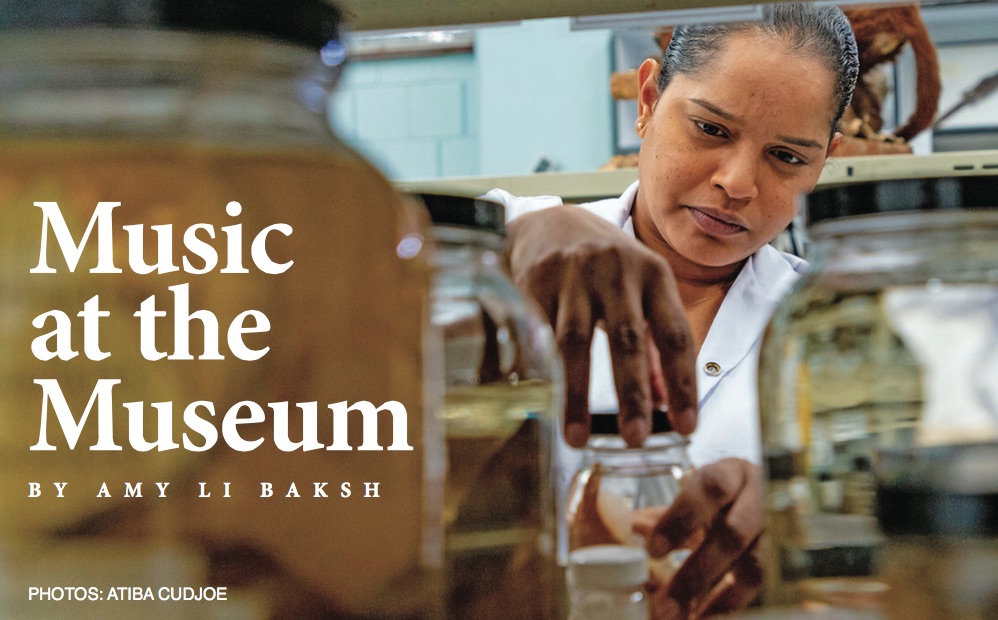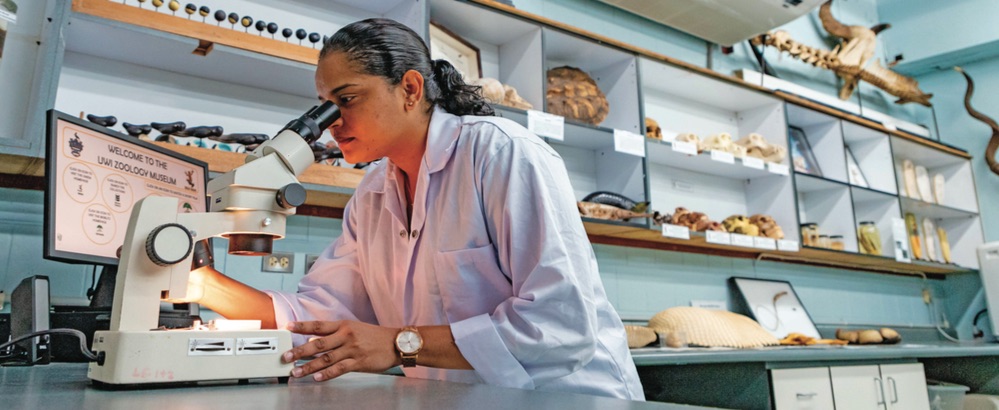
If you hold a seashell up to your ear, the story goes, you can hear the sound of the ocean. It’s just a myth, but there is one shell that fits this myth perfectly—the Voluta musica, or music volute. It is laboratory technician Jennalee Ramnarine’s favourite specimen in The UWI Zoology Museum’s (UWIZM) collection; a small, delicate snail shell with a pattern that looks just like music notes.
With 70,000 biological specimens housed in the two compact rooms in the Department of Life Sciences (DLS), this is one of the many fascinating finds that have been brought back by collectors from across Trinidad and Tobago, the Caribbean, and some far reaches of the world, to be preserved, maintained and catalogued by the museum staff. Right now that means Jennalee.
“Since the departure of our curator, I’ve been given additional responsibilities in caring for the museum,” she says.
In the last decade, the UWIZM has acquired four other collections, including thousands of insects from CABI (Centre for Agriculture and Bioscience International) and most recently, in 2019, fossilised bone material collected in 1983 and 2001 that is possibly up to 1 million years old.
Dr Judith Gobin, Head of the Department of Life Sciences, says, “The UWIZM is not only a UWI treasure, it is a national treasure. The DLS is actively looking for financial support to make some much needed improvements to the museum. This is necessary as we have recognised the importance of preserving these exhibits, some of which are invaluable.”

Dr Judith Gobin, Head of the Department of Life Sciences, says, “The UWIZM is not only a UWI treasure, it is a national treasure. The DLS is actively looking for financial support to make some much needed improvements to the museum. This is necessary as we have recognised the importance of preserving these exhibits, some of which are invaluable.”
“Seeing where the museum was 10 years ago, being a part of the process, and helping it evolve into what you see today, gives me a great sense of accomplishment,” she says.
Jennalee also prepares specimen material for teaching purposes, painstakingly catalogues specimens into the museum’s database, and conducts educational tours to the visiting public; especially school children of all education levels, from 5-year-olds and up.
She says, “the diversity of the work that I do ensures that no day is like any other. I appreciate that. Every day is an opportunity to learn something new. And to know that when it’s all said and done, people can learn and benefit from it makes it all worth it.”
The museum is an invaluable record of the life here in T&T and beyond, and not everyone knows that it is completely free to the public to visit and learn all about the creatures that share the planet with us. But over time, that’s been changing. “Over the past 10 years there has been an exponential increase in the popularity of the UWIZM, especially with the introduction of campus tours, summer camps and outreach initiatives,” says Jennalee.
From its famed two-headed shark to the archaeological treasure the Banwari Burial (the oldest indigenous remains found in the Caribbean), there are many wonders to be found on the shelves of the UWIZM.